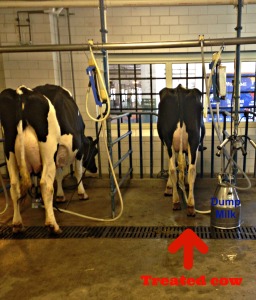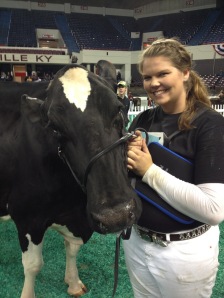 Could there be antibiotics in this meat? What about this gallon of milk? These may be questions that run through your mind frequently while shopping at your grocery store. If you want to know the answer, the person to ask is your local farmer.
Could there be antibiotics in this meat? What about this gallon of milk? These may be questions that run through your mind frequently while shopping at your grocery store. If you want to know the answer, the person to ask is your local farmer.
Let’s look at this one step at a time.
Why do farmers use antibiotics?
Just like when your children get sick, farmers want to keep their animals healthy. The first step for your children and for animals is very similar. Farmers call the Veterinarian just like you would call the Doctor. Antibiotics are quite expensive for animals, so they are only used when necessary, not as a preventive measure. Farmers claim their animals as family, if they don’t take good care of their animals, then the animals won’t produce and the farmer will lose their profit.
Meat
The USDA requires all beef, pork, poultry or milk headed for grocery store shelves or restaurants be tested and inspected by the Food Safety Inspection Service, to guarantee no antibiotic residues are in the meat. Farmers follow firm withdrawal policies for animals that were given antibiotics. This means that there is a certain amount of days after being treated with antibiotics before the animal can be slaughtered. Each antibiotic has a different time frame for the medicine to be expelled from the animal; this is listed on the label. When a farmer has been given the prescription from the Veterinarian, he follows the instructions just like you do at home. The farmer keeps records of when the animal was treated and keeps track of any symptoms the animal may still have.
Milk
Dairy cows have a different challenge than beef cows, when a dairy cow is treated with antibiotics it is expelled through her milk. Dairy farmers have to keep very good records of when a cow was treated. When a milk cow is treated, most producers put colored ankle bands on the cow to ensure that they remember that she has been treated. Once a treated cow comes into the parlor to be milked, a dump milk bucket is hooked up so that her milk will be completely separate from the milk that will be sold. Her milk all goes into the bucket and once she is finished milking, the milker unit is sanitized thoroughly. The bucket full of milk is then disposed of so that it doesn’t contaminate any other milk. The dump bucket is then sanitized so that it is clean. After the antibiotics have left the cows system, the farmer takes a milk sample and has it tested to make sure that she has no antibiotics left in her system. When the milk truck comes to a farm to pick up their milk, they also take a sample to make sure no antibiotics are present.
 As it turns out humans and their pets use TEN times more antibiotics than the Nation’s livestock. Farmers wouldn’t want to eat meat or drink milk with antibiotics in them, so they won’t sell antibiotic treated products to you!
As it turns out humans and their pets use TEN times more antibiotics than the Nation’s livestock. Farmers wouldn’t want to eat meat or drink milk with antibiotics in them, so they won’t sell antibiotic treated products to you!
